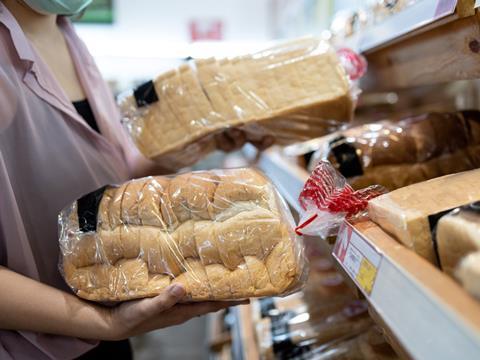
Olga Kachook, senior manager at the Sustainable Packaging Coalition, asks if the FMCG value chain’s fixation on shelf life hinders the ability of packaging to prevent food waste.
Do you think of packaging as a tool for fighting climate change? It can be. Preventing food waste is a top solution to climate change, and making changes to packaging is the seventh most effective way to reduce the climate emissions from food waste. Research shows changes to packaging design could help prevent 650,000 tons of food waste a year.
While the potential for preventing food waste - and its associated emissions - with packaging is impressive, the devil is in the details. It’s true that packaging can help prevent food waste by extending shelf life, but it’s not a guaranteed fix. Rather, it depends on how the packaging is designed and used in practice.
First, let’s consider the disconnect between manufacturers and consumers. Brands and retailers may consider extended shelf life for products as a significant achievement for food waste prevention. Yet, consumer research seems to indicate these benefits aren’t realized by consumers. In a survey of 1,117 Austrian consumers, only about one-third noticed the shelf life-extending function of packaging, while nearly two-thirds of consumers did not agree that packaging helps to avoid food waste.
It’s worth noting that packaging in retail settings serves just as much to efficiently and easily distribute, stock, and price food as it does to extend shelf life or protect the product. For both companies and consumers, packaging is often equally about convenience as it is about food waste prevention.
Today, food manufacturers typically seek to make a product with the maximum possible shelf life, since this gives a company more time to transport and sell the product at retail. The trade-off is that a longer shelf life can be concerning to consumers, who are increasingly not interested in foods that appear to be highly processed.
From a packaging standpoint, a longer shelf life may also require more material or more complex packaging, which may not be recyclable. For example, do pastries, which are often individually packaged in unrecyclable plastic film, need to have a retail shelf life of several weeks? Certain products, such as baked goods, are typically purchased by consumers for specific occasions on or near the day of purchase. With this in mind, we might design packaging that meets “real world” shelf life needs and does not limit recyclability.

Consider how other solutions beyond shelf life extension might prevent food waste. For example, some foods like dried pasta are well-suited to being sold loose and unpackaged. Typically, pasta’s packaging accounts for 60% of dried pasta’s total carbon footprint. What if consumers were able to purchase only what they need from bulk stations and reduce excessive purchasing? Combined with the elimination of single-use primary packaging, the reduced product waste could lower the overall carbon footprint of dried pasta.
If these solutions can prevent food waste, what stops more consumers from buying unpackaged food, and more retailers from offering products loose? For consumers, it likely comes down to the inconvenience of using bulk stations or concerns about the perceived freshness of food that has been “out” in bulk bins. For retailers, there are issues of cleanliness, staffing, and checkout procedures that need to be addressed. These barriers are masking real opportunities to reduce both food waste and packaging waste.
Nestle is one example of a company that has questioned its shelf life needs. It has suggested that its packaging for shelf-stable products “may in many cases be overspecified, and that a more sustainable use of materials could go hand-in-hand with reduced shelf life.” They note that their shelf-stable foods typically have a shelf life of 18 months or two years, even though consumers may not need it to last for such a long time.
Ultimately, it's not enough to assume that extended shelf life automatically prevents food waste. As the recent STOP Waste SAVE Food project concluded, “until concrete evidence of waste reduction is provided, the effect of an extended shelf life can only be considered as a potential solution for waste avoidance. In practice, counterproductive effects can also occur which cancel out the targeted waste reduction or even reverse it. For example, prolonged shelf life can lead to too many products being offered or purchased at the same time.”
What can manufacturers and brands do about this? It’s time to explore the link between packaging and food waste in more detail. Shelf life extension is one possible strategy for preventing food waste, but there are others - better closures and product evacuation, smaller portion sizes, active and intelligent packaging, and improved resealability to name a few.
Ultimately, brands and manufacturers need to assess the design and performance of each package, particularly how it can help store and deliver food in consumers' homes. Packaging’s job is to protect food and prevent waste. Sometimes, this might be achieved through shelf life extension. In other cases, design innovations are needed to ensure that the root causes of consumer food waste, like portion sizes that are too big, are addressed. With better design, packaging can be a truly effective tool for fighting food waste and mitigating the climate crisis.

















